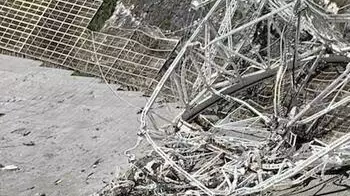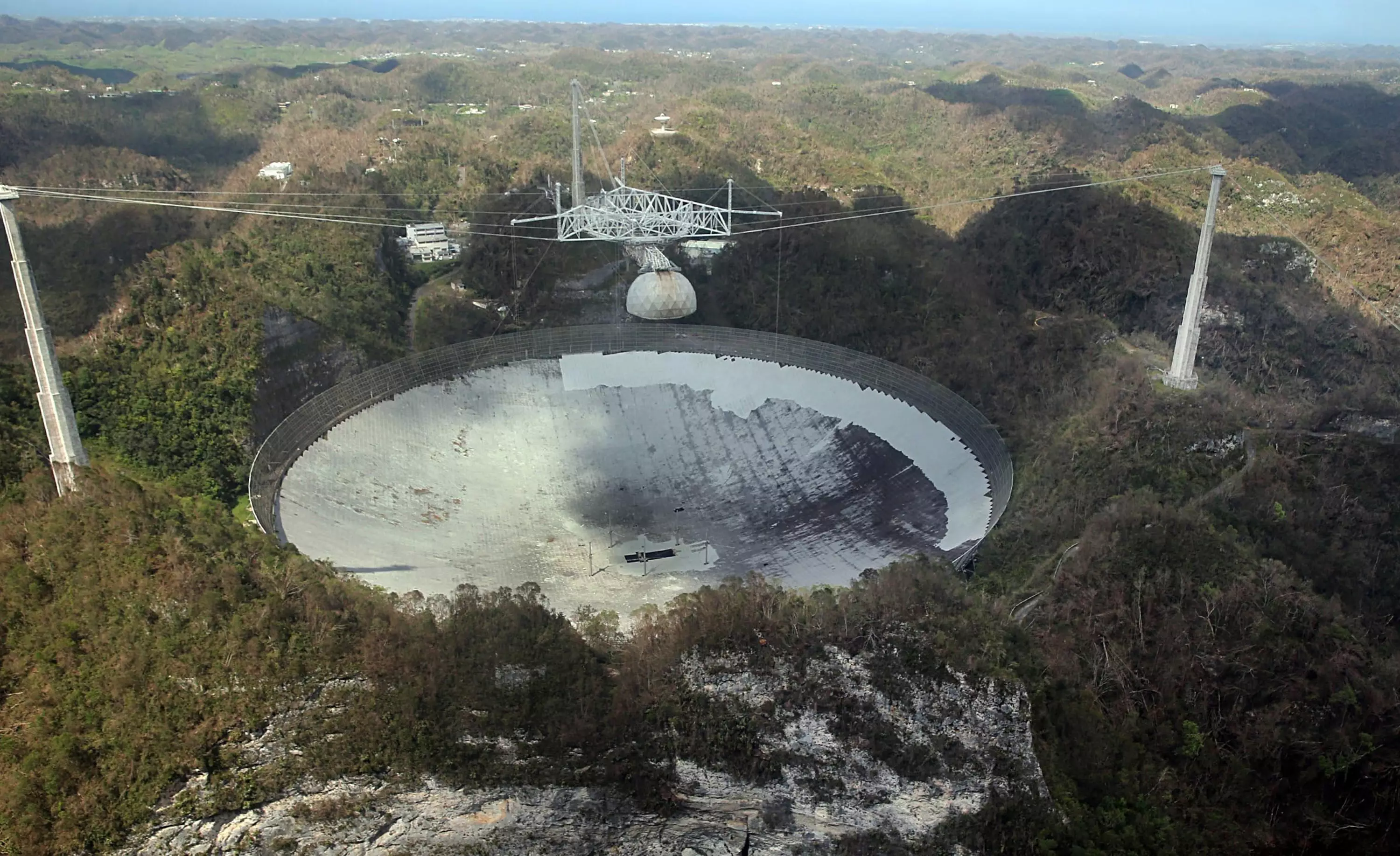
Authorities were left deeply saddened after the iconic Arecibo Observatory in Puerto Rico collapsed.
If you're wondering where you have seen the observatory before, you might remember the scene in GoldenEye when 007 has a death-defying face off with the villain before being airlifted to safety.

Advert
The 900-ton facility is owned by the US National Science Foundation (NSF), who confirmed the tragic news happened on Tuesday (1 December).
The NSF said: "The instrument platform of the 305m telescope at Arecibo Observatory in Puerto Rico fell overnight. No injuries were reported. NSF is working with stakeholders to assess the situation. Our top priority is maintaining safety. NSF will release more details when they are confirmed.
"NSF is saddened by this development. As we move forward, we will be looking for ways to assist the scientific community and maintain our strong relationship with the people of Puerto Rico."
Investigations have confirmed the collapse was caused by three of the telescope's support towers breaking off. A preliminary report says the observatory's learning centre was affected by falling cables.
Advert

The collapse comes just weeks after the NSF said the observatory would be decommissioned and disassembled through a controlled demolition. It suffered irreparable damage earlier this year and authorities knew the tower's days were numbered.
In August, one of the 305-metre telescope's cables unexpectedly detached, however it was thought the remaining cables would be able to bear the load. A second cable broke on 6 November and engineers discovered it snapped at about 60 percent of what should have been its minimum breaking strength.
The NSF said in a statement that inspectors are at the scene.
Advert
"Top priorities are maintaining safety at the site, conducting a complete damage assessment as quickly as possible, and taking action to contain and mitigate any environmental damage caused by the structure or its materials," the organisation said.
"While the telescope was a key part of the facility, the observatory has other scientific and educational infrastructure that NSF will work with stakeholders to bring back online.
The observatory was completed in 1963 and was the world's largest single-aperture telescope for more than 50 years.
It has been responsible for the observation and study of asteroids, according to Space, and its destruction is simply devastating.
Featured Image Credit: UCF/NSFTopics: News